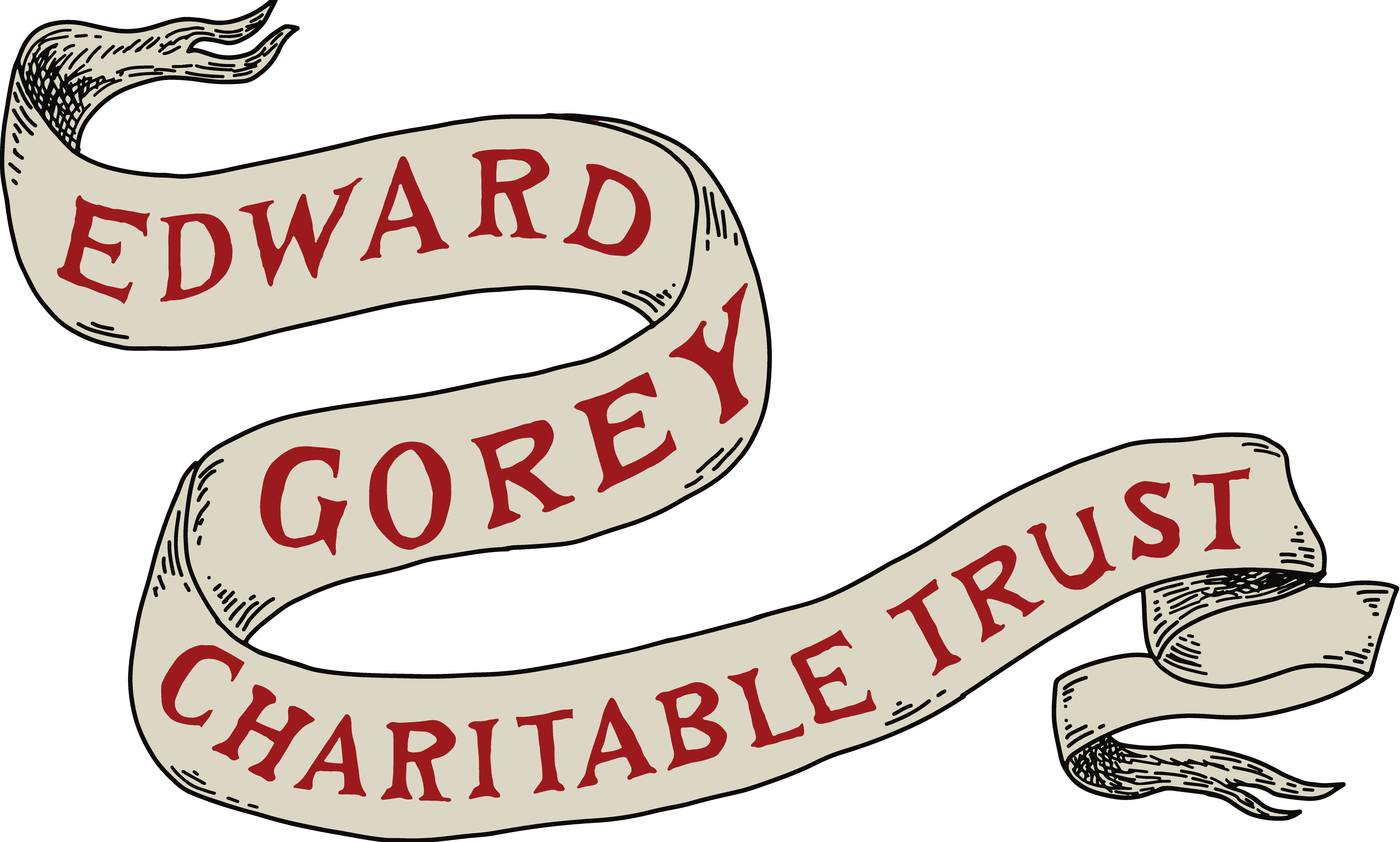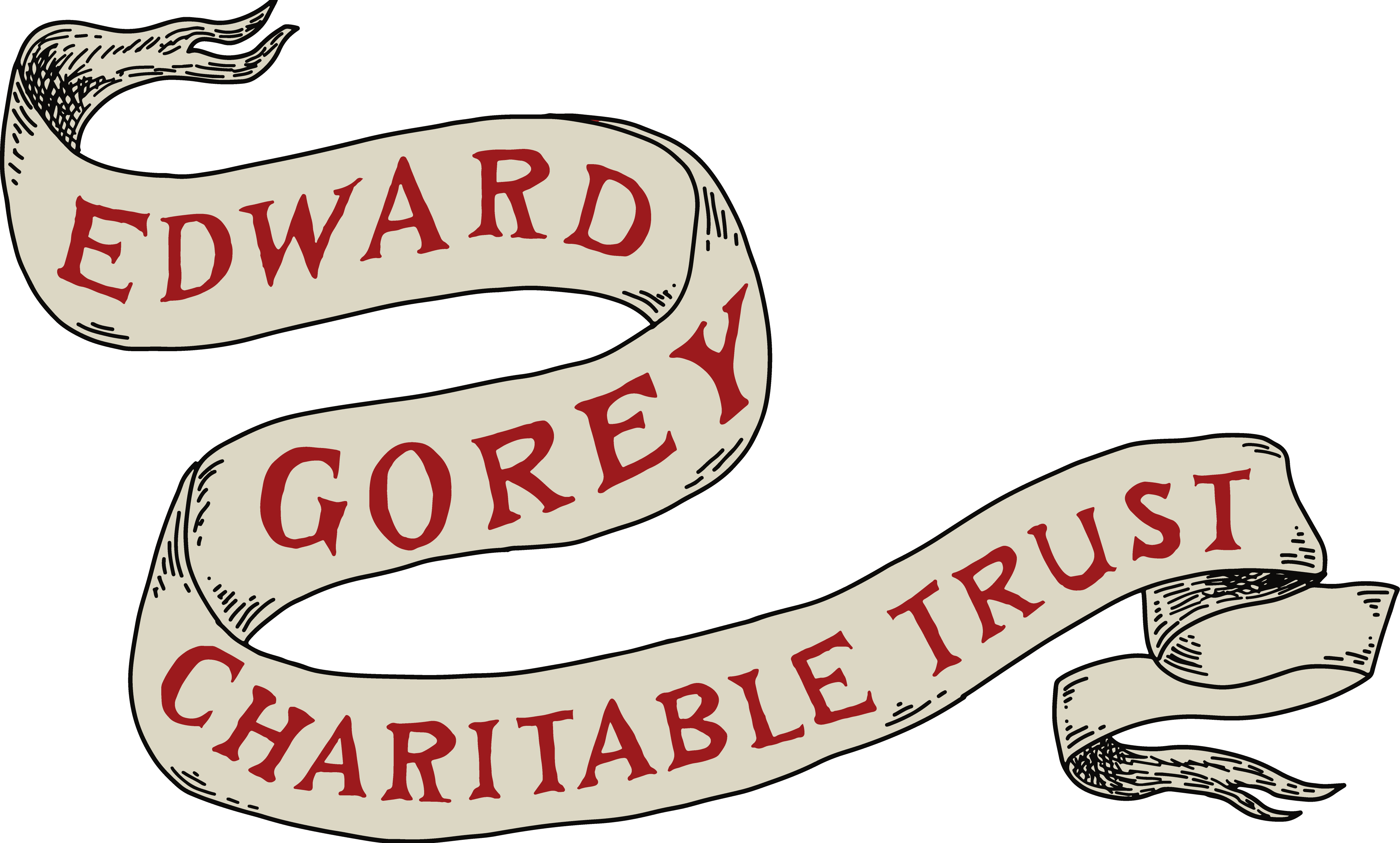The Edward Gorey Charitable Trust has partnered with writer ( Gorey Secrets, Great Comic Cats) and Gorey collector Malcolm Whyte to publish articles and chapters from his most recent work, Edward Gorey Tales Explored, on our Gorey Voices blog. Over the next few months, the Trust will showcase approximately 15 articles written by Mr. Whyte, each focusing on a different book by Edward Gorey. This collaboration offers a wonderful opportunity to delve deeper into Gorey’s works through the perspective of one of his most avid followers.
Third in a children’s-book collaboration between Peter F. Neumeyer (author) and Edward Gorey (illustrator),1 Why we have day and night is a disarming explanation of our sun’s relationship to the rotating earth. In this simple, cosmic lesson, evocative ideas and images fan the reader’s imagination beyond those usually found in a children’s book.
A series of completely black pages running from the first to the last opens the book, about which author Neumeyer, says “…the solid black pages are, of course, the darkness out of which we (all) came/arrived and the darkness into which we go at the end.” This already creates an unnerving setting for a story about a family of children’s immersion in total darkness. Only on black pages, are a boy, his younger sister, a set of younger twins, and a large, striped cat — and their speech — visible, reversed out of the black in white. They are surprised and very puzzled by their sudden plunge into a lightless world as the boy cries, “What happened to the light?” Increasingly alarmed cries follow from the others. “Could a squirrel have chewed a wire?” “Are we still asleep?” “Did our eyes burst?” “Is the world finished?” “Aren’t we born yet?”

At one point the young girl asks her brother if he can explain the darkness, to which he reminds all of the kids of the time their father showed, with the aid of an orange and a flashlight, how the earth rotates toward and away from the sun. “He switched on the flashlight and I held an orange” said the boy.
“Pretend you are a bug and you are on the orange,” their father said. First the bug is in the beam of the light. Then, as the boy spins the orange around, the bug is in the dark. Why we have day and night is explained, but the book is not finished. “But why is it dark all over now?” someone asks. The answer seems to come from the strange things that continue to happen in the dark. The cat takes advantage of it, while the hungry bug is seen riding on the edge of a large orange-colored disc floating in the lightless air as he got hungrier and hungrier.
“And finally he got SO hungry that he ate right through the outside, and into the middle; and he crawled down deep inside and it was all…” There the reader turns to the last black page where the last words, dead center in stark white type, just read: “all, all…”
Collaboration
That un-final ending is typical Gorey, but it is not his. It’s Neumeyer’s! Just as written in his manuscript. It is, however, an indication of how close the two men were in their story-making together. Other collaborative points turn up in the story’s characters.
At the time of the book’s birth the Neumeyer family had three boys, which Gorey represented in his winsome drawings of four children of varied ages. In fact, one of the Neumeyer boys is mentioned in his text. On what would be page twenty of his first draft someone asks, “Why is everything black?” Followed by “Dan do you know?” “Dan,’” however, did not make it through the book’s final editing.
Both the Gorey and the Neumeyers had loveable pet cats, so, the book had to have a cat. Gorey’s feline contribution to Why we have day and night is burly and bountifully striped, front cover of the first edition, and like all cats, is both curious and single-minded. It serves as subtle comic relief, especially in
its successful act of thievery.

On top of Neumeyer’s accomplishments as an esteemed translator, annotator, poet, and professor of English, may be counted his story telling skill. He made up scores of tales for his boys on their camping and sailing trips together, or for bedtime at home. During Neumeyer’s collaboration with Gorey on his “Donald” books (Donald and the…, 1969 and Donald Has a Difficulty, 1970) he showed a number of his other children’s stories to Gorey out of which Why we have day and night became their next project.
The first thing Gorey did in preparation for prospective publication was to divide Neumeyer’s one-page typescript into thirty-two pages, a conventional page count for illustrated children’s books. The document, pictured below, is faithfully reproduced, marginal notations and all, on page 98 of on Neumeyer’s absorbing Floating Worlds, The Letters of Edward Gorey & Peter F. Neumeyer.
This colorfully illustrated book documents Gorey’s and Neumeyer’s publishing partnership through a fascinating series of letters. More than three-dozen envelopes sent from Gorey were whimsically illuminated with birds, bugs, beasties, seascapes, gardens and many other oddments.
While creating Why we have day and night, the correspondents shared enthusiasms about other authors, artists and philosophies.

Early in the process Gorey not only developed the dramatis personae and setting for the book’s action, but also contributed some writing until he changed his mind. On page 101 of Floating Worlds we find a letter dated in Gorey’s unique fashion:
Dear Peter,
Let us be up and doing, etc.” he remarked to himself, leaping from bed at five-thirty, and pausing only to hear the teakettle, he addressed himself to rewriting the ending of Why We Have Day and Night.
Just before going to bed the same evening, Gorey has a realization that falls right in to his Great Simple Theory about Art that says in part: “Anything that is art is presumably about some certain thing, but is really always about something else.”
…it came to me while I was staring into space a while back that the really sinister thing about the story was not the explanation, which is pretty sinister, heaven knows, but the real and presumed source of the explanation
The next day, Gorey rises with a totally different opinion.
…WWHDAN simply should not be changed, whatever its ultimate fate. It is really vintage (to coin a term of approbation) Neumeyer, probably the strangest and most intricate of the lot, and the most difficult to see what it’s about. I know you said you thought it was just a simple little story, but I can’t agree. In parentheses, how odd it is when we so seldom draw the same conclusions about ourselves and about others, or even think about making comparisons, or maybe it’s just me. This was occasioned by my thinking ‘But how could Peter not see what WWHDAN is about (apart from the idea around which he built the story)?
Now, I didn’t get it. I recognized the scary situation, but I didn’t see what was sinister in the father demonstrating the rotation of the earth with a flashlight and a turning fruit, or a sudden and lingering black out. So, in February, 2023 I wrote Neumeyer for his thoughts of what Gorey saw and I missed of the books unspoken threat. After considerable reflection, he replied:
There is something like a catastrophe, a literally existential one — it’s all black — everywhere. Maybe, the kids venture, it’s that they haven’t been born yet. (Wow!) or, the world has ended. Then there is a total time lapse, an inexplicable reversal; we are in a time before the first half of the book. It was all black — i.e. the end of the book had happened already, and now we’re in full daylight with the father —before the beginning of the book.
And as for the father’s explanation (before it went all dark) of course you’re right about it being totally unobjectionable about the world turning and the sun shining on diverse halves of it. However, you left out the main sentence — the actual explanation is no longer valid now, the little bug ate into the heart of the world, and that’s why you/we are all in the dark. And that is a sort of despair, or even that’s too simple. You (children) and we all now, we readers, are in NO time. There is nothing. It’s all over. It all (time, too?) has been obliterated. It’s a magical and existential total annihilation. It’s a sort of total nihilism. And nihilism could be total despair. That’s pretty big stuff in a children’s book.
Malcolm, haven’t read the book with that much attention since 1970. The book came fast to me, as they all did, but since you focused my mind on it right now, that’s what I see in it. And I guess I think better of it now than I had in my memories of it. And what I wrote, in this letter, that’s what I think Gorey must have read into the story, and why, of maybe 30 manuscripts of mine that he had, he chose this one.
It was a perfect choice. In word and picture, Why We Have Day and Night is a beguiling fusion of humor, science and mystery that can deliver more than it initially appears it might— a specialty by two of the world’s master story tellers, Edward St. John Gorey and Peter Florian Neumeyer.
By Malcolm Whyte

1. The first was Donald and the… (1969), then Donald has a Difficulty (1970). ↩
2. Letter from PFN, Feb.26, 2023 ↩



